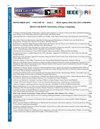Detecting Frame Deletion in Videos Using Supervised and Unsupervised Learning with Convolutional Neural Networks
IF 1.3
4区 工程技术
Q3 COMPUTER SCIENCE, INFORMATION SYSTEMS
引用次数: 0
Abstract
In recent years, videos have been susceptible not only to any edition but also to a variety of forgeries. One of the most popular video forgeries is frame deletion, in which a group of frames is removed to hide specific actions from the human eye. When frame deletion occurs, videos selected as evidence lose their evidentiary value. This highlights the necessity of automation, especially for analyzing large volumes of videos. Thus, we measure the performance of two deep learning approaches for frame deletion detection. Both of them use Convolutional Neural Networks (CNN): The first one, a supervised 3DCNN model and, the second one, is an unsupervised model compound of VGG-16 and Resnet-50. We evaluated them using 10-fold cross-validation in the following datasets: UCF-101, VIFFD and DTD (Driving Test Dataset), which is our contribution to the data community. To the best of our knowledge, no comparison of both approaches using 10-fold cross-validation has been found in the literature before. Afterward, we analyze the results and make recommendations for future work in this area.基于卷积神经网络的监督学习和无监督学习检测视频中的帧删除
近年来,视频不仅容易受到任何版本的影响,而且还容易受到各种伪造的影响。最流行的视频伪造之一是删除帧,其中一组帧被删除以隐藏人眼的特定动作。当删除帧发生时,被选为证据的视频就失去了证据价值。这突出了自动化的必要性,特别是在分析大量视频时。因此,我们衡量了两种用于帧删除检测的深度学习方法的性能。两者都使用卷积神经网络(CNN):第一个是有监督的3DCNN模型,第二个是VGG-16和Resnet-50的无监督模型化合物。我们在以下数据集中使用10倍交叉验证进行评估:UCF-101, VIFFD和DTD(驾驶测试数据集),这是我们对数据社区的贡献。据我们所知,在之前的文献中没有发现使用10倍交叉验证的两种方法的比较。最后,对研究结果进行了分析,并对今后的工作提出了建议。
本文章由计算机程序翻译,如有差异,请以英文原文为准。
求助全文
约1分钟内获得全文
求助全文
来源期刊

IEEE Latin America Transactions
COMPUTER SCIENCE, INFORMATION SYSTEMS-ENGINEERING, ELECTRICAL & ELECTRONIC
CiteScore
3.50
自引率
7.70%
发文量
192
审稿时长
3-8 weeks
期刊介绍:
IEEE Latin America Transactions (IEEE LATAM) is an interdisciplinary journal focused on the dissemination of original and quality research papers / review articles in Spanish and Portuguese of emerging topics in three main areas: Computing, Electric Energy and Electronics. Some of the sub-areas of the journal are, but not limited to: Automatic control, communications, instrumentation, artificial intelligence, power and industrial electronics, fault diagnosis and detection, transportation electrification, internet of things, electrical machines, circuits and systems, biomedicine and biomedical / haptic applications, secure communications, robotics, sensors and actuators, computer networks, smart grids, among others.
 求助内容:
求助内容: 应助结果提醒方式:
应助结果提醒方式:


